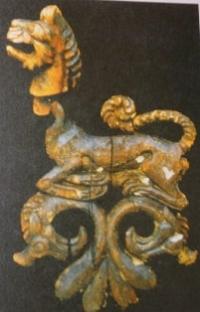You are here
Nomads art Berel barrows.

Long-distance hiking in Kazakhstan mountains.
“An ancient burial site will always hold clues as to who the people were, and to who we are”
Anthony T. Hincks.
Climbing tour to Belukha mount from Uryl settlement.
The territory of Altai was a part of Great Steppe, which was inhabited by the legendary Scythian-Cachs, Sauromatian and Sarmatian tribes. They were brave warriors and skilful riders famous for their battle feats.
Archaeological sources give a solid ground for the statement that the ancient Berelians were great craftsmen – metallurgists, builders, potters, jewellers, wood-carvers and artists. There are many legends about mysterious tribes inhabiting the land of severe and mysterious Altai.
Ancient written sources and namely "History" of Herodotus mention them under the name of "griffins guarding gold". "According to a legend, - “ the father of history” wrote, - one-eyed people, Arimasphs, stole it from griffins".
Just as other contemporaries of European Scythians, Issedonians, Argipians, Arimaspians and other, they were mysterious and strange. The modern researchers of the Great Steppe’s ancient nomad culture still find these peoples as mysterious as images of those fantastic gryphons that are so widely used in the monuments of Altai, as that mythical gold substituted by the shine of foil.
Could they possibly be guarding some gold-bearing sources? Samples of ancient nomads’ art were the prototypes of fine, decorative and applied arts of the Kazakhs.The succession is traced not only in items of material culture, transportation means, instruments, household, weapons, but also in the forms of economic activity, in mechanisms of adaptation to the nature and ecological niche.
There is a succession in the system of life-support as a whole. Owing to the finds in Berels, the mummified remnants of people, we have received a unique opportunity to trace the succession at an essentially new level, on the basis of molecular, biological, demographic and genetic research.
The received data will help isolate and compare DNA to enable the study of the nature and mechanisms of transfer of ancient genetic code to the following generations.
Authority:
Book "Berel". Zeinolla Samashev, Gulnara Zhumabekova, Galia Bazarbaeva, Sagyntai Sungatai. http://old.unesco.kz/heritagenet/kz/content/history/monument/berel/text3.htm
Photos by
Alexnder Petrov.







